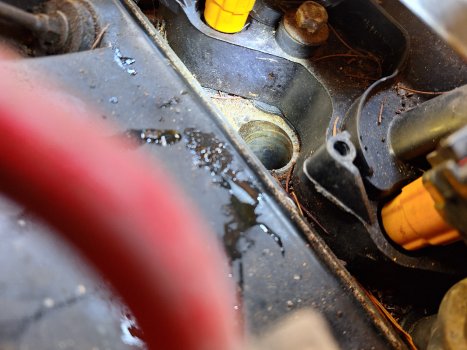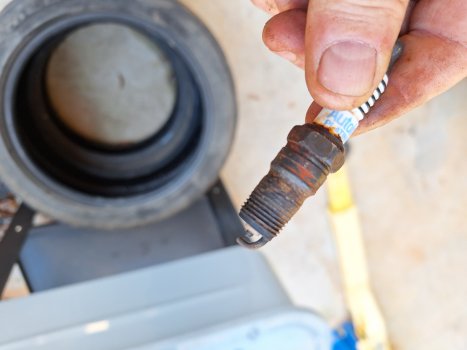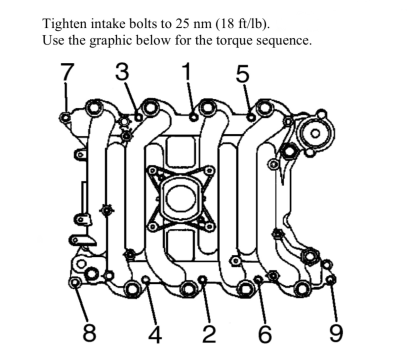Howdy all. So I started to replace my spark plugs today. I'm not sure what the cylinder numbering scheme is on a 4.6. I'm assuming that drivers side closest to the radiator is #1 and the same cylinder on the opposite bank is #2. Suppose that this numbering scheme is correct. #1 and #3 were fine. When I pulled the plug boot for #5 it has coolant in the hole. I haven't gone any further as I was loosing daylight.
I'm assuming that the intake is cracked. Obviously I'm going to check the rest, but the engine was missing badly when accelerating and I suspect that I might find more holes with coolant in them. Assuming that the manifold is toast, I'm wondering where I can get another. Keep in mind that this is not a performance vehicle but more than likely a daily driver. I certainly wouldn't want anything that would decrease fuel mileage.
Any recommendations? New is probably the way to go. There are no salvage yards around here that have 96 Tbirds in them. I have a 95 aluminum manifold but I didn't want to use it unless I couldn't find another. I'd sure appreciate some help...
I'm assuming that the intake is cracked. Obviously I'm going to check the rest, but the engine was missing badly when accelerating and I suspect that I might find more holes with coolant in them. Assuming that the manifold is toast, I'm wondering where I can get another. Keep in mind that this is not a performance vehicle but more than likely a daily driver. I certainly wouldn't want anything that would decrease fuel mileage.
Any recommendations? New is probably the way to go. There are no salvage yards around here that have 96 Tbirds in them. I have a 95 aluminum manifold but I didn't want to use it unless I couldn't find another. I'd sure appreciate some help...



